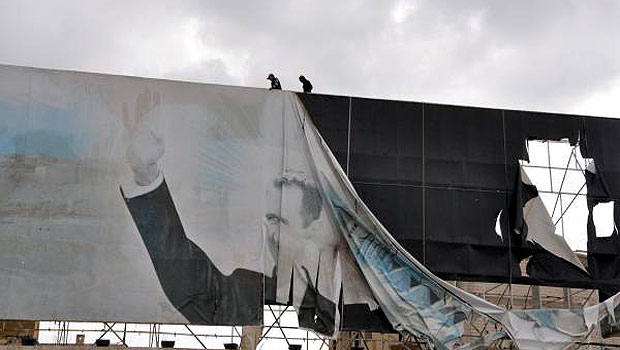On 1 December 2011 I wrote a column asking whether the Shi’ite star had set, in reference to the repercussions of the Syrian revolution at the time and what they would entail. Today, two years on from the outbreak of the revolution, we are now in a new phase. We are now seeing a Shi’ite pincer being operated on Syria, from two sides, and the hand holding that pincer is Iran.
The Syrian rebels have made undeniable progress on the ground and there are now concrete international movements. Furthermore, the Arab stance is escalating, especially in light of the concluding statement of the recent meeting of Arab foreign ministers, which “stressed the right of each state according to its wishes to offer all types of self-defense, including military, to support the resilience of the Syrian people and the Free [Syrian] Army.” Given all of the above, Iran’s allies, Iraq and Hezbollah, are beginning to move militarily against the Syrian rebels, flanking them from Iraq and Lebanon, thus putting the Syrian revolution at the center of the jaws of the Shi’ite pincer. The question is why?
The quick and obvious answer is that Iran has accepted that the fall of the Assad regime is inevitable and only a matter of time. Therefore it is pushing its allies to intervene militarily now not to defend Al-Assad, but to send a message to the regional powers and the international community that Iran will not stand by idly, and that its primary project—namely to spread the Khomeini revolution and extend Tehran’s influence in the region—will not be destroyed that easily through the overthrow of the Assad regime. Yet Tehran is well aware that the fall of Assad would mark the end of its project in the region, meaning an internal crisis for Iran, not for Hezbollah or Nuri Al-Maliki.
Therefore, Iran is mobilizing now through the Shi’ite pincer—Hezbollah and Maliki’s forces—to impose a fait accompli on Syrian territory for the post-Assad regime, regional powers, and the international community. Iran wants to impose this before it has to face its own internal dues, and the difficult days that will follow Assad’s downfall. In doing so, Iran has effectively become responsible for the remnants of the Assad regime, the Alawi sect, and anyone who wants to fight the new regime in Syria. Iran is doing all this—placing Syria between its Shi’ite pincers—to say that there will be no Syria without Assad or without Iranian influence.
These are the features of the Iranian plan for post-Assad Syria, and this is what the Syrians must be aware of. The revolutionaries must not miss an opportunity here when it comes to Iran. The matter also requires regional and international awareness, for as I have said before Iran’s real power lies in subversion and not in providing solutions. Therefore, Tehran should not be granted any more responsibility than it deserves, and the world must be ready to thwart its project through a clear agreement on the features of post-Assad Syria. It must send a clear message to Tehran that its pincer will break, and this can only be achieved through actions, not words.

An interesting reaction – as representing Arab opinion or partially so – to the Iranian ambitions in Syria and their readiness to invest much more than they have done so far to save their position there as a bridge to the Mediterranean
As a bystander I say that Iran will continue to spread it’s military-economic-spiritual influence as long as all the fire and bloodshed are outside of Iran. look at Lebanon, Syria, Gaza, Gulf states, Yemen, Iraq and even Far east and south America.
In all these places the fingerprints of Iran are found, but no one dares to blow back at Tehran or Shiraz.